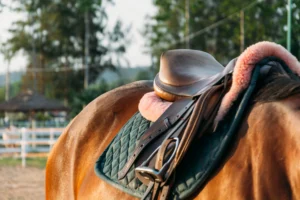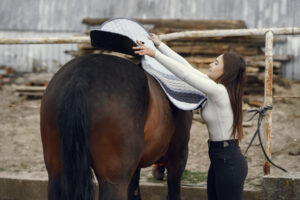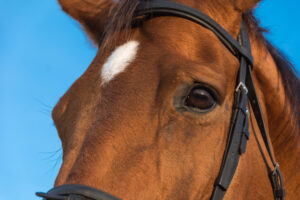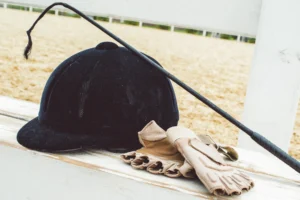Introduction
Selecting the right horse hay feeder is more than just a matter of convenience—it’s an investment in your horse’s health, your time management, and your financial resources. A proper horse hay feeder reduces waste, promotes healthy eating habits, and can save you significant money over time. However, many horse owners make costly mistakes when choosing a hay feeder, leading to unnecessary expenses, health issues for their horses, and frustration.
Whether you’re considering a slow feeder for horses, exploring DIY horse hay feeder options, or trying to decide between a round bale hay feeder for horses and a horse hay net, this comprehensive guide will help you avoid the four most expensive mistakes that horse owners commonly make when selecting feeding equipment.
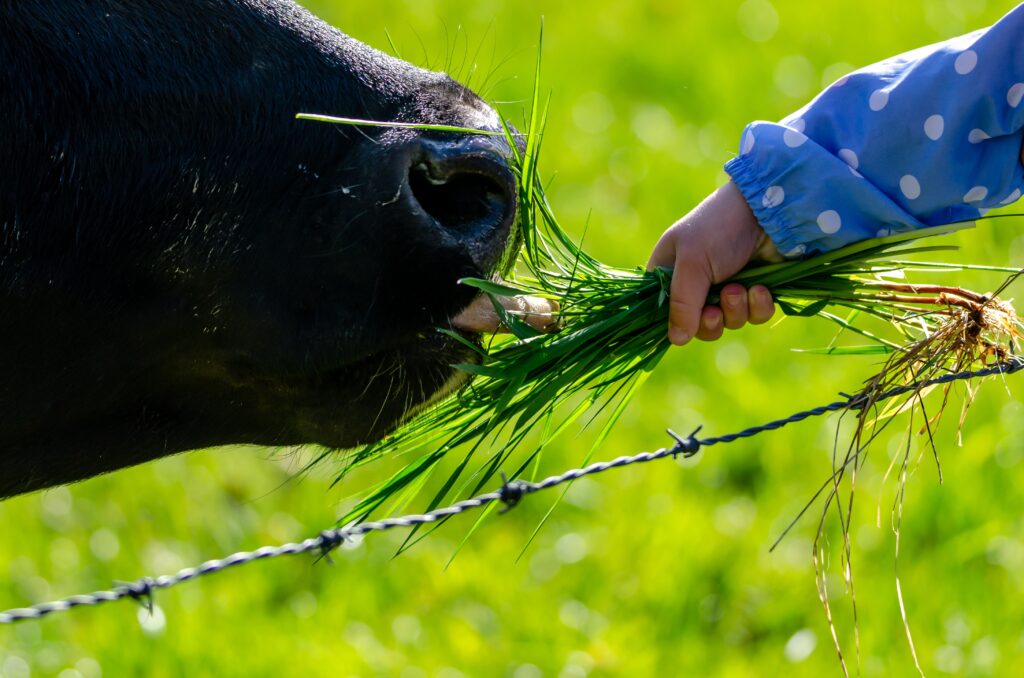
Why Your Choice of Horse Hay Feeder Matters
Before we dive into the common mistakes, it’s important to understand why your choice of a horse hay feeder is so crucial. Horses are natural grazers, designed to eat small amounts continuously throughout the day. A properly designed hay feeder for horses mimics this natural grazing pattern while minimizing waste and maintaining feed quality.
The right horse hay feeder can:
- Reduce hay waste by up to 50% compared to ground feeding
- Slow consumption, improving digestion and preventing boredom
- Keep hay clean and free from contamination
- Save you money on both feed costs and potential veterinary bills
- Reduce the time you spend cleaning up wasted hay
Now, let’s explore the costly mistakes many horse owners make when selecting a hay feeder for horse stall use or pasture settings.
Mistake #1: Ignoring Your Horse’s Specific Needs and Feeding Habits
One of the most expensive mistakes horse owners make is purchasing a horse hay feeder without considering their horse’s unique needs, size, and feeding habits. This one-size-fits-all approach often leads to wasted money on inappropriate equipment.
Understanding Different Types of Horse Hay Feeders
Different styles of horse hay feeders serve different purposes:
Slow Feeders for Horses
A slow feeder for horses is designed to restrict the amount of hay a horse can pull out at one time, extending feeding time and reducing waste. These are ideal for:
- Easy keepers who need to limit intake
- Horses prone to respiratory issues (as they keep hay off the ground)
- Animals that tend to bolt their food
One horse owner reported: “Switching to a slow hay feeder for horses reduced my hay consumption by 30% and helped my overweight mare lose 75 pounds in six months without changing her hay quality.”
Round Bale Hay Feeder for Horses
If you have multiple horses or want to reduce daily feeding chores, a round bale hay feeder for horses can be an excellent investment. These larger structures:
- Allow multiple horses to feed simultaneously
- Protect large quantities of hay from weather
- Reduce the frequency of hay replenishment
A hay feeder for multiple horses needs to be sturdy enough to withstand group dynamics and large enough to prevent competition.
Horse Hay Net vs. Traditional Feeders
A horse hay net offers portability and can be a good solution for travel or temporary situations. However, they require more frequent refilling and may not be suitable as a permanent solution for some situations.
The Cost of Mismatching
Choosing the wrong type of horse hay feeder for your specific situation can result in:
- Wasted hay if the feeder doesn’t properly contain the feed
- Increased labor if the feeder is difficult to fill or clean
- Health issues if the feeder causes unnatural feeding positions
- Damaged equipment if the feeder isn’t durable enough for your horse
Solution: Assess your horse’s eating habits, consider your management style, and evaluate your feeding location before investing in a hay feeder for horses. For horses that eat aggressively, a durable slow hay feeder for horses might be worth the higher upfront cost.
Mistake #2: Underestimating the Importance of Quality and Durability
Another costly error is selecting a cheap, poorly constructed horse hay feeder. While the initial price may seem attractive, low-quality feeders often result in higher long-term costs due to frequent replacements, repairs, and increased hay waste.
The Hidden Costs of Low-Quality Horse Hay Feeders
Inexpensive hay feeders might save you money initially but consider these long-term expenses:
- Replacement costs when the feeder breaks (often within months)
- Increased hay waste from feeders with poor design
- Potential veterinary bills from injuries caused by broken feeders
- More labor and time spent cleaning up scattered hay
Materials Matter in Horse Hay Feeder Construction
The best hay feeder for horses will be constructed from materials appropriate for its intended use:
Metal Horse Hay Feeders
Metal feeders, like a wall mounted horse hay feeder or outdoor horse hay feeder, offer durability but must be properly constructed to avoid sharp edges. Galvanized or powder-coated options resist rust, extending their usable life.
Plastic Horse Hay Feeders
While lighter and often less expensive, plastic feeders need to be high-density, UV-resistant material to withstand outdoor use and horse strength. Many horse owners report that cheap plastic feeders crack within months of outdoor use.
Wooden DIY Horse Hay Feeder
If you’re considering building a DIY horse hay feeder, select pressure-treated lumber or hardwoods that resist moisture and chewing. A properly constructed wooden hay rack or hay feeder for horse stall use can last for years if maintained.
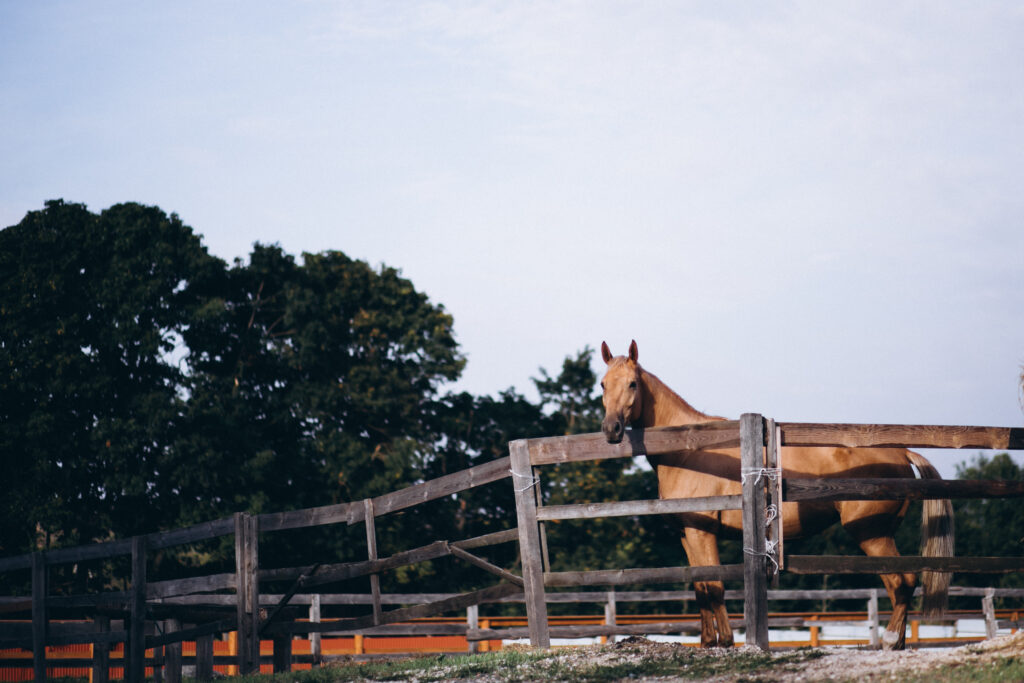
Key Quality Features to Look For
When shopping for the best hay feeder for horses, evaluate:
- Smooth edges and corners to prevent injuries
- Solid construction with quality welds or fasteners
- Weather-resistant materials for outdoor horse hay feeder options
- Proper sizing for your horse and hay type
Solution: Invest in quality the first time. A well-made horse hay feeder might cost more initially but will save money through longevity and reduced waste. Many horse owners find that premium slow feeders pay for themselves within a year through reduced hay consumption alone.
Mistake #3: Choosing the Wrong Size and Design for Your Situation
A third costly mistake is selecting a horse hay feeder that doesn’t match your management system, space constraints, or the number of horses you’re feeding. This mismatch often results in wasted hay, increased labor, and frustrated horses.
Matching Feeder Size to Horse Numbers
If you’re looking for a hay feeder for multiple horses, ensure it’s large enough to prevent competition and fighting. A good rule of thumb is to provide:
- At least 2 feet of feeder space per horse for peaceful feeding
- Multiple access points to prevent dominant horses from controlling feed
- Adequate capacity to reduce refill frequency
A large horse hay feeder designed for group settings will have different requirements than individual feeders. One farm owner noted: “I wasted money on three separate small feeders before investing in one properly sized pasture hay feeder for horses. The horses no longer push each other away from the hay, and I fill it once instead of three times.”
Location Considerations for Your Horse Hay Feeder
Different settings require different designs:
Hay Feeder for Horse Stall
A hay feeder for horse stall installation should:
- Mount securely to prevent movement
- Position hay at an appropriate height
- Minimize waste onto bedding
- Allow easy access for filling from outside the stall when possible
A wall mounted horse hay feeder works well in stall settings, keeping hay contained and off the floor.
Outdoor Horse Hay Feeder Requirements
For a pasture hay feeder for horses or any outdoor horse hay feeder, consider:
- Weather protection (consider a horse hay feeder with roof)
- Drainage to prevent hay spoilage
- Anchoring to prevent movement
- Durability against the elements
A covered hay feeder for horses protects your investment in quality hay from rain and snow, reducing waste significantly.
Design Features That Reduce Waste
The best hay feeder for horses will include design elements that minimize waste:
- Hay-saving grates that prevent horses from pulling out large amounts
- Collection trays that catch dropped hay
- Appropriate openings sized for your hay type (flakes vs. loose)
Solution: Measure your space, count your horses, and consider your management routine before purchasing. For multiple horses in a pasture setting, a round bale hay feeder for horses with adequate access points might be the most efficient option. For stabled horses, individual wall-mounted feeders sized appropriately for your stall dimensions will work best.
Mistake #4: Overlooking Long-Term Health Implications
Perhaps the most expensive mistake of all is failing to consider how your horse hay feeder choice affects your horse’s long-term health. Improper feeding positions, dust exposure, and unnatural feeding patterns can lead to significant veterinary expenses.
Natural Feeding Positions and Horse Hay Feeder Height
Horses evolved to eat with their heads lowered to the ground. Many horse hay rack designs or improperly installed wall mounted horse hay feeder units force horses to eat with their heads elevated, which can cause:
- Increased respiratory issues from dust and particles falling into airways
- Abnormal wear on teeth from unnatural chewing angles
- Strain on neck and back muscles
- Reduced saliva production, potentially increasing ulcer risk
A study published in the Journal of Equine Veterinary Science found that horses fed from ground level had significantly fewer respiratory issues than those fed from elevated feeders.
Slow Feeding Benefits for Digestive Health
A slow hay feeder for horses mimics natural grazing patterns by extending feeding time, which provides numerous health benefits:
- Reduced risk of colic through steady forage intake
- Decreased likelihood of gastric ulcers
- Prevention of boredom-related behaviors
- More consistent gut motility
Many equine veterinarians now recommend slow feeders as preventative health tools, potentially saving thousands in colic surgery or ulcer treatment costs.
Safety Considerations
Poor horse hay feeder design can create injury risks:
- Feeders with wide openings might trap hooves or legs
- Sharp edges on metal feeders can cause cuts
- Unstable designs might tip or shift, frightening horses
- Small openings might cause dental injury if the horse pulls against them
Solution: Prioritize feeders that allow natural grazing positions while still containing hay effectively. For many situations, a properly designed slow hay feeder for horses at ground level provides the best compromise between waste reduction and natural feeding posture.
Finding the Best Hay Feeder for Horses: Key Considerations
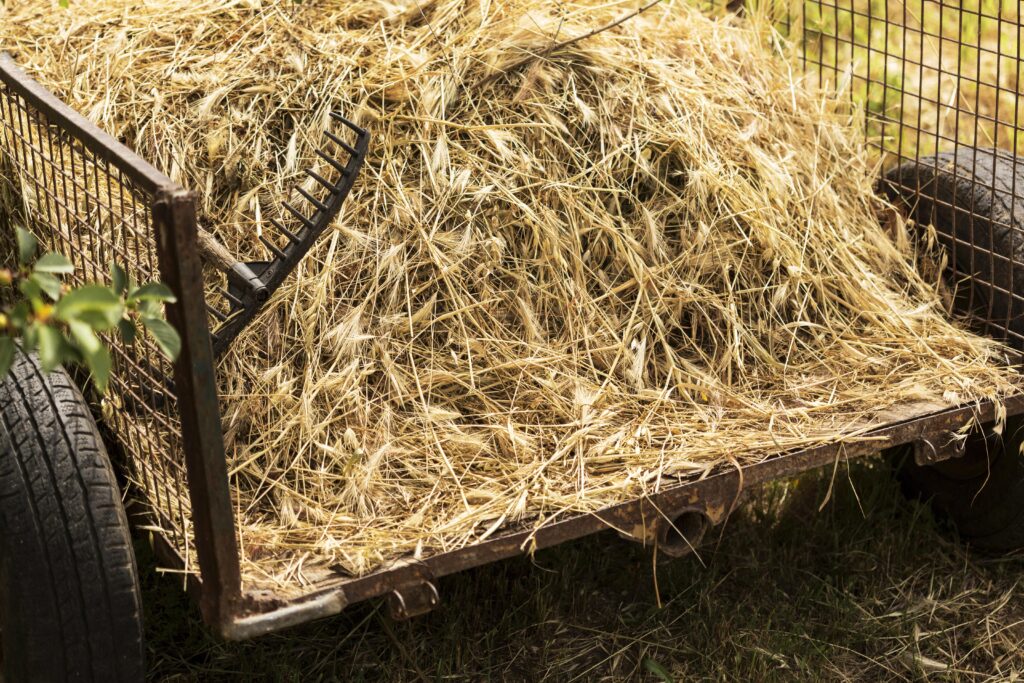
Now that we’ve covered the major mistakes, let’s examine the key factors to consider when selecting the right horse hay feeder for your specific situation.
Hay Type Compatibility
Different feeders work better with different hay formats:
For Square Bales:
- Traditional hay racks
- Wall-mounted feeders
- Horse hay nets
- Slow feeding systems with grates
For Round Bales:
- Round bale hay feeder for horses (with or without roof)
- Hay feeder for horses round bale specific designs
- Large horse hay feeder with restrictive openings
One study found that a properly designed round bale hay feeder for horses can reduce waste by up to 42% compared to unprotected round bales, potentially saving thousands of dollars annually for larger operations.
Feeding Environment
Consider where your horse hay feeder will be used:
Indoor Options:
- Hay feeder for horse stall (corner or wall-mounted)
- Horse hay rack installed in stabling
- Horse hay net hung in controlled environment
Outdoor Requirements:
- Weather-resistant outdoor horse hay feeder
- Covered hay feeder for horses to protect from elements
- Horse hay feeder with roof for maximum protection
- Durable pasture hay feeder for horses
Horse Hay Feeder Ideas for Special Situations
Sometimes standard commercial options don’t fit unique situations. Creative horse hay feeder ideas include:
For Limited Space:
- Corner-mounted slow feeders
- Collapsible hay nets
- Multi-purpose feeder/storage combinations
For Special Needs Horses:
- Extra-low feeders for horses with arthritis
- Cushioned edges for accident-prone animals
- Modified opening sizes for specialized needs
A DIY horse hay feeder can often be customized to your exact requirements when commercial options fall short.
DIY Horse Hay Feeder vs. Commercial Options
Many horse owners contemplate building their own DIY horse hay feeder to save money or customize features. Before deciding, consider:
Benefits of DIY Horse Hay Feeder Construction

- Cost savings on materials vs. commercial products
- Customization for your specific needs
- Ability to repair or modify as needed
- Satisfaction of creating something useful
Common DIY Horse Hay Feeder Designs
Popular DIY horse hay feeder ideas include:
Wooden Slow Feeders:
- Using 2x4s and mesh to create a hay-saving grid
- Building a box with restricted openings
Barrel Feeders:
- Converting plastic barrels into round bale protectors
- Creating individual feeding stations from half barrels
PVC Designs:
- Constructing wall-mounted feeders from PVC pipe
- Building corner feeders with angled pipes
When Commercial Is Better
Despite the appeal of DIY, commercial horse hay feeders are often superior when:
- You lack construction skills or tools
- Safety is a primary concern
- Durability requirements are high
- Your time is limited
Professional-grade slow hay feeder for horses options often incorporate safety features and design elements that are difficult to replicate in DIY versions.
Comparing Horse Hay Net vs. Hay Feeder Options
Many horse owners debate between using a horse hay net or a more structured feeder. Each has advantages:
Horse Hay Net Benefits
- Highly portable
- Generally inexpensive
- Easy to clean
- Effective at slowing consumption
- Works well for travel
Structured Hay Feeder Advantages
- More durable
- Often holds more hay
- Typically more stable
- Can be easier to fill
- Often reduces waste more effectively
In the hay net vs hay feeder debate, consider how you’ll use it. One rider noted: “I use hay nets for shows and traveling, but my permanent slow feeder at home has paid for itself many times over in reduced waste.”
How to Maximize Your Horse Hay Feeder Investment
Regardless of which horse hay feeder you choose, these tips will help you get the most value:
Proper Installation
- Ensure secure mounting of wall mounted horse hay feeder units
- Place outdoor feeders on well-drained ground
- Position at appropriate heights for your horse’s size
- Allow adequate space around large horse hay feeder units
Regular Maintenance
- Clean feeders regularly to prevent mold growth
- Check for sharp edges or wear points
- Tighten any loose components
- Repair minor damage before it worsens
Smart Usage Practices
- Introduce horses gradually to new feeding systems
- Monitor for any signs of stress or frustration
- Adjust hay quality and quantity as needed
- Observe waste patterns and make adjustments
Conclusion: Investing Wisely in a Horse Hay Feeder
Choosing the right horse hay feeder represents a significant opportunity to improve your horse’s health while reducing long-term costs. By avoiding the four costly mistakes we’ve discussed—ignoring your horse’s specific needs, underestimating quality importance, choosing the wrong size and design, and overlooking health implications—you can make a wise investment that pays dividends for years.
Whether you opt for a slow feeder for horses, explore horse hay feeder ideas for a custom solution, or invest in a durable round bale hay feeder for horses, prioritize quality, appropriate design, and your horse’s natural feeding patterns.
Remember that the best hay feeder for horses is one that:
- Reduces waste effectively
- Promotes natural feeding positions
- Withstands your horse’s use
- Fits your management system
- Contributes to long-term health
By considering these factors and avoiding common mistakes, your horse hay feeder investment will pay for itself many times over through reduced waste, improved health, and simplified management.
FAQs About Horse Hay Feeders
What is the best hay feeder for horses in small barns?
For limited space situations, a wall mounted horse hay feeder or corner slow feeder maximizes space efficiency while keeping hay contained. Look for models with hay-saving grates to minimize waste onto stall floors.
How much can I save with a good horse hay feeder?
Studies show that switching from ground feeding to a quality horse hay feeder can reduce waste by 30-50%. For a horse consuming 20 pounds of hay daily at $300 per ton, this represents potential savings of $330-$550 annually per horse.
Are DIY horse hay feeder options safe?
DIY horse hay feeder projects can be safe if properly designed and constructed with appropriate materials. Pay special attention to removing sharp edges, using horse-safe materials, and ensuring stability.
How do I clean my horse hay feeder?
Most commercial horse hay feeders can be cleaned with a stiff brush and occasionally hosed down. For metal feeders, check periodically for rust. For plastic models, inspect for cracks or UV damage. Wooden feeders may require occasional sealing or treatment.
Should I choose a horse hay net or structured feeder?
In the hay net vs hay feeder debate, nets offer portability and low cost but typically hold less hay and may require more frequent refilling. Structured feeders generally offer better waste reduction for permanent installations.
How high should I mount a wall mounted horse hay feeder?
A wall mounted horse hay feeder should be positioned so your horse can eat in a natural position with its head slightly lowered—typically about wither height or lower. This promotes proper digestion and reduces respiratory risks.
What features should I look for in an outdoor horse hay feeder?
The best outdoor horse hay feeder will be weather-resistant, have a horse hay feeder with roof or cover for protection, provide good drainage, and be securely anchored to prevent movement or tipping.
For more excellent information about horse care, feeding, and equipment, visit our other helpful articles at PetsPump.
winter horse care essentials, selecting quality horse equipment, and managing your horse’s feeding schedule
comprehensive DIY horse equipment guide
, see our article on equine natural behaviors.
References:
- Smith, K. et al. (2023). “Effect of Hay Feeder Design on Hay Waste and Economic Implications.” Journal of Equine Veterinary Science, 45(2), 78-85.
- American Association of Equine Practitioners. (2024). “Guidelines for Equine Feeding Practices.” AAEP Press.
- Taylor, J. (2023). “Natural Feeding Positions and Respiratory Health in Horses.” Equine Health Quarterly, 18(3), 34-42.
- University of Kentucky College of Agriculture. (2024). “Reducing Hay Waste in Horse Operations.” Extension Publication ASC-232.
- Peterson, M. (2024). “Slow Feeding Systems and Equine Digestive Health.” Veterinary Clinics: Equine Practice, 30(1), 151-163.



